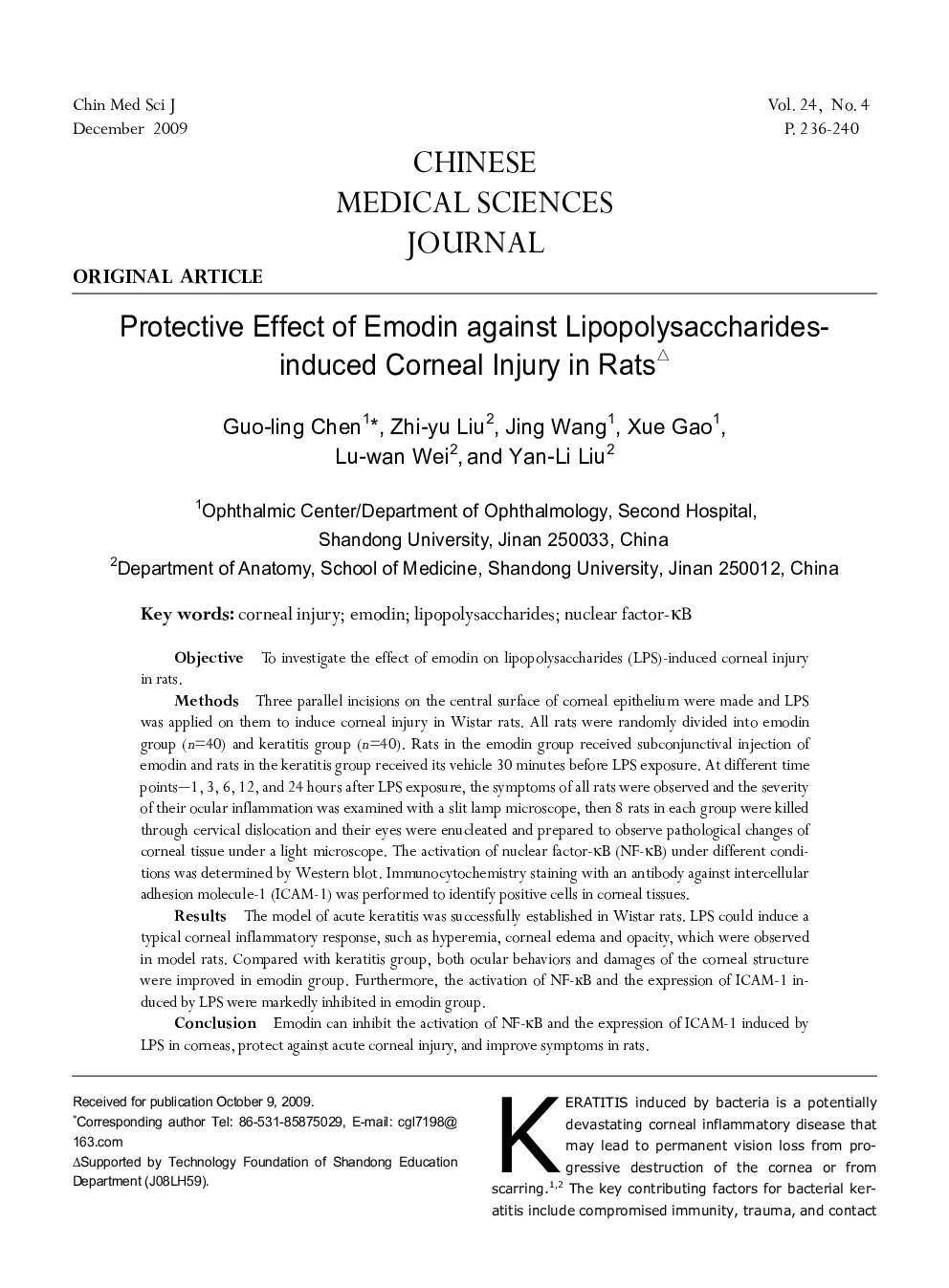| Article ID | Journal | Published Year | Pages | File Type |
|---|---|---|---|---|
| 3459588 | Chinese Medical Sciences Journal | 2009 | 5 Pages |
ObjectiveTo investigate the effect of emodin on lipopolysaccharides (LPS)-induced corneal injury in rats.MethodsThree parallel incisions on the central surface of corneal epithelium were made and LPS was applied on them to induce corneal injury in Wistar rats. All rats were randomly divided into emodin group (n=40) and keratitis group (n=40). Rats in the emodin group received subconjunctival injection of emodin and rats in the keratitis group received its vehicle 30 minutes before LPS exposure. At different time points—1, 3, 6, 12, and 24 hours after LPS exposure, the symptoms of all rats were observed and the severity of their ocular inflammation was examined with a slit lamp microscope, then 8 rats in each group were killed through cervical dislocation and their eyes were enucleated and prepared to observe pathological changes of corneal tissue under a light microscope. The activation of nuclear factor-κB (NF-κB) under different conditions was determined by Western blot. Immunocytochemistry staining with an antibody against intercellular adhesion molecule-1 (ICAM-1) was performed to identify positive cells in corneal tissues.ResultsThe model of acute keratitis was successfully established in Wistar rats. LPS could induce a typical corneal inflammatory response, such as hyperemia, corneal edema and opacity, which were observed in model rats. Compared with keratitis group, both ocular behaviors and damages of the corneal structure were improved in emodin group. Furthermore, the activation of NF-κB and the expression of ICAM-1 induced by LPS were markedly inhibited in emodin group.ConclusionEmodin can inhibit the activation of NF-κB and the expression of ICAM-1 induced by LPS in corneas, protect against acute corneal injury, and improve symptoms in rats.
